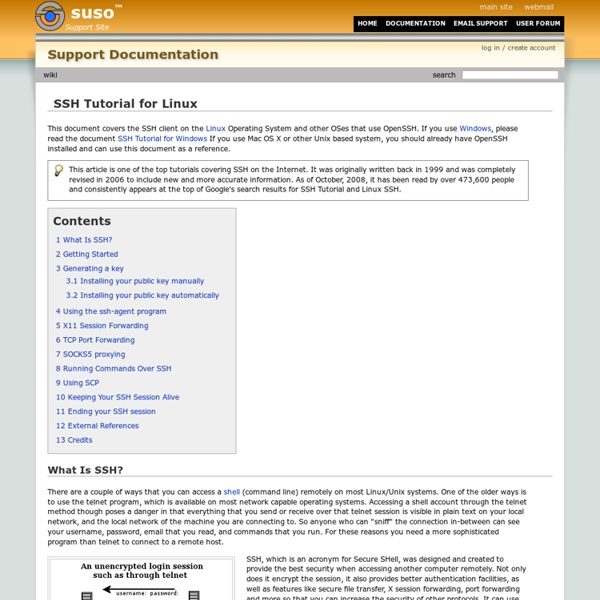SSH Tutorial for Linux - Support Documentation

Lisp: Common Lisp, Scheme, Clojure, Emacs Lisp - Hyperpolyglot
a side-by-side reference sheet grammar and invocation | variables and expressions | arithmetic and logic | strings | listsarrays | dictionaries | functions | macros | execution control | file handles | file buffers | files | directoriesprocesses and environment | libraries and namespaces | objects | reflection | java interop General version used Versions used to verify data in the cheat sheet. show version How to determine the version. compiler racket Compiling a.ss creates the byte-code compiled file a_ss.zo, which will be used by mzscheme in preference to the source code if it encounters making a standalone executable common lisp A standalone executable is created by the sb-ext:save-lisp-and-die function. In order for code to be compiled as a standalone executable, it must be packaged as a module. #lang scheme (define hello (printf "Hello world! A standalone executable can be created with DrScheme using Scheme | Create Executable… emacs Building Emacs shebang emacs lisp #! An implementation of echo: #!
Linux Classes
Guide to dual-booting
Dual-booting refers to the concept of installing two operating systems on the same computer, and having the option to choose which one to boot into when the computer is rebooting. Dual-booting is actually a special case of multi-booting, or installing more than one operating on a computer. This is a very common practice in the Linux and BSD communities. If you are coming from the Windows world and want to install a Linux or BSD distribution while maintaining your Windows installation, dual-booting is one means of accomplishing that. When dual-booting, you may choose to install both operating systems on the same hard drive, or on separate hard drives – if your computer has more than one. So here are a few things to keep in mine when you are attempting to set up a dual boot configuration: Dual-booting does not imply installing on the same hard drive. To have articles like this delivered automatically to your Feed Reader or Inbox, subscribe via RSS or email.
Hack Your Life! | Tools for survival…
Related:
Related:



